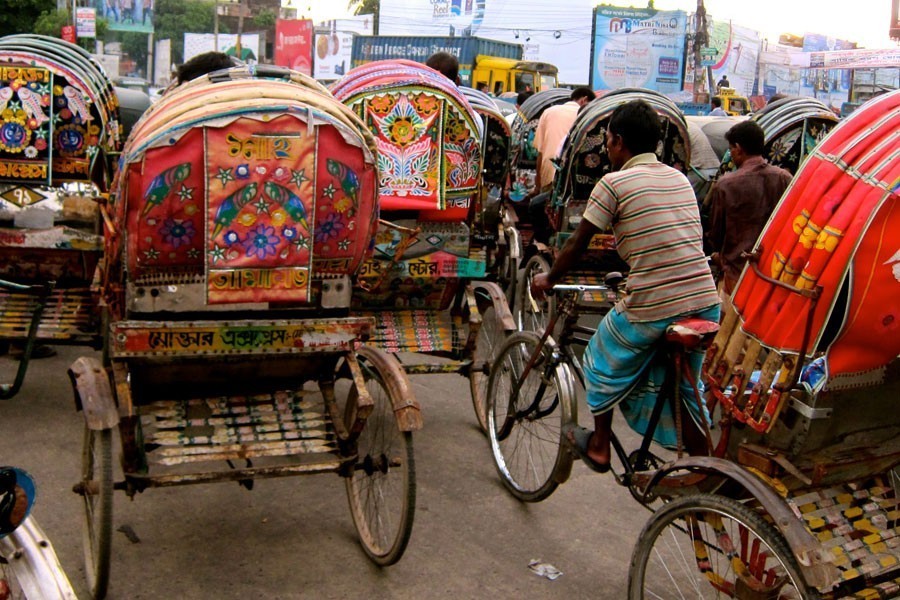Mayor Atiqul Islam of the Dhaka North City Corporation (DNCC) deserves kudos for coming up with yet another innovative plan. This time his brainchild is an introduction of QR code (an initialism for quick response code which is a two dimensional matrix barcode that contains necessary machine-readable information) for rickshaws. The mayor plans to take all unregistered rickshaws off the road and instead press into service 0.2 million of these paddled three-wheelers on the city roads.
According to the mayor, only 28,000 rickshaws had obtained licences but now one million rickshaws ply on the capital's roads. His intention is to streamline rickshaw service by allowing rickshaws to ply with the QR code so that any of those can be scanned to know about all the required information.
Surely this is a smart way of taking action against illegal or unregistered rickshaws. It is unbelievable that only 28,000 rickshaws are registered. The mayor did not mention when this number of these paddled vehicles got registered. Issuance of licences to rickshaws was stopped in 1988 but the Dhaka South City Corporation (DSCC) started the process of issuance and renewal in 2020---after 32 years.
If the number mentioned dates back to 1988, it means the total was for the entire city because it was not bifurcated then. Now there is a need for clarification of the number of rickshaws that will have permission for movement bearing the QR code. Does he mean the DNCC or the entire city? Logically, he can speak for the area under his jurisdiction. This means the DNCC will have 0.2 million rickshaws and if the DSCC also follows suit, there may be a 0.4-0.5 million-strong fleet of rickshaws.
Since the present size of those --- as already mentioned by the mayor --- is 1.0 million, roughly the city will have half the present number of rickshaws. If and when this happens, the implications are unlikely to be confined to the rickshaw-pullers and the syndicate behind the illegal business of this particular type of transport. Almost hundred per cent of pullers are slum-dwellers and if such a large number of rickshaws go off the road, if not as many of them, at least a majority of them will become unemployed and find their shelter in slums unaffordable.
The other important question is, if the curtailed size of these paddled vehicles will be enough to meet the city's transport need. This question comes to the fore with reinforced gravity because its most suitable alternative--- public bus service that is --- is yet to prove its worth. Ideally, rickshaws should not have a place in the capital city of a country poised to become a developing country. It should have a decent system of public transport where buses should comprise its backbone complemented by taxi, hired cars like Uber and auto-rickshaws. If rickshaws have to be retained at all, they must ply within the residential areas and on the peripheries of the city.
So, without making any alternative arrangement both for pullers and city's inhabitants, the decision of drastic curtailment of the number of rickshaws may have given rise to some unforeseen problems along with the predictable ones. Even the introduction of what is called 'Nagar Paribahan' has not made a difference to the traffic chaos and brought about an ease of communication because the city is full of indiscipline out and out. Unless the monopoly and highhandedness of transport owners and operators can be strictly dealt with, the city hardly stands to have a modestly smooth transport system. Let the poor rickshaw-pullers undergo retraining in order to have livelihoods other than rickshaw-pulling before they are driven out of their present occupation.


